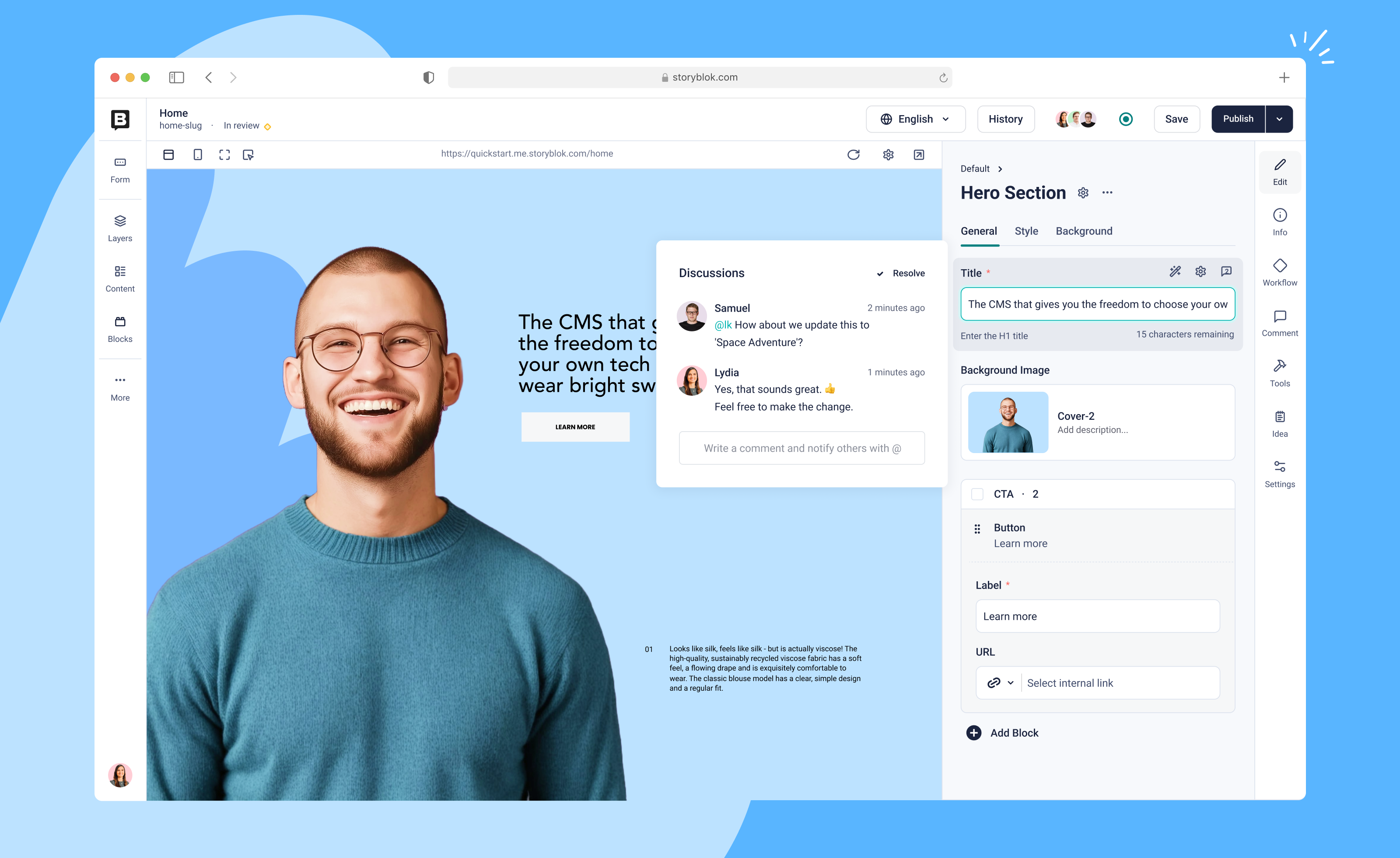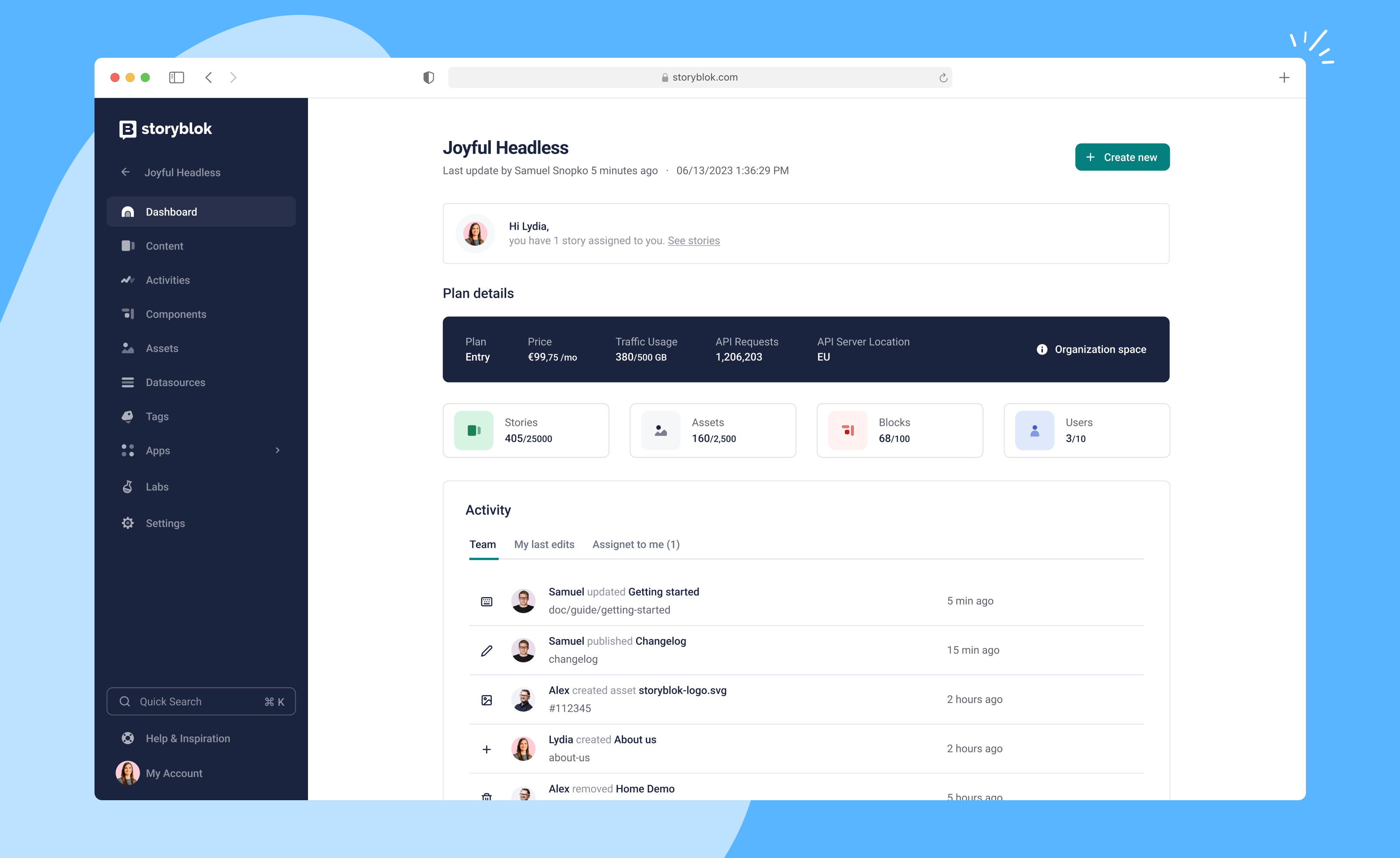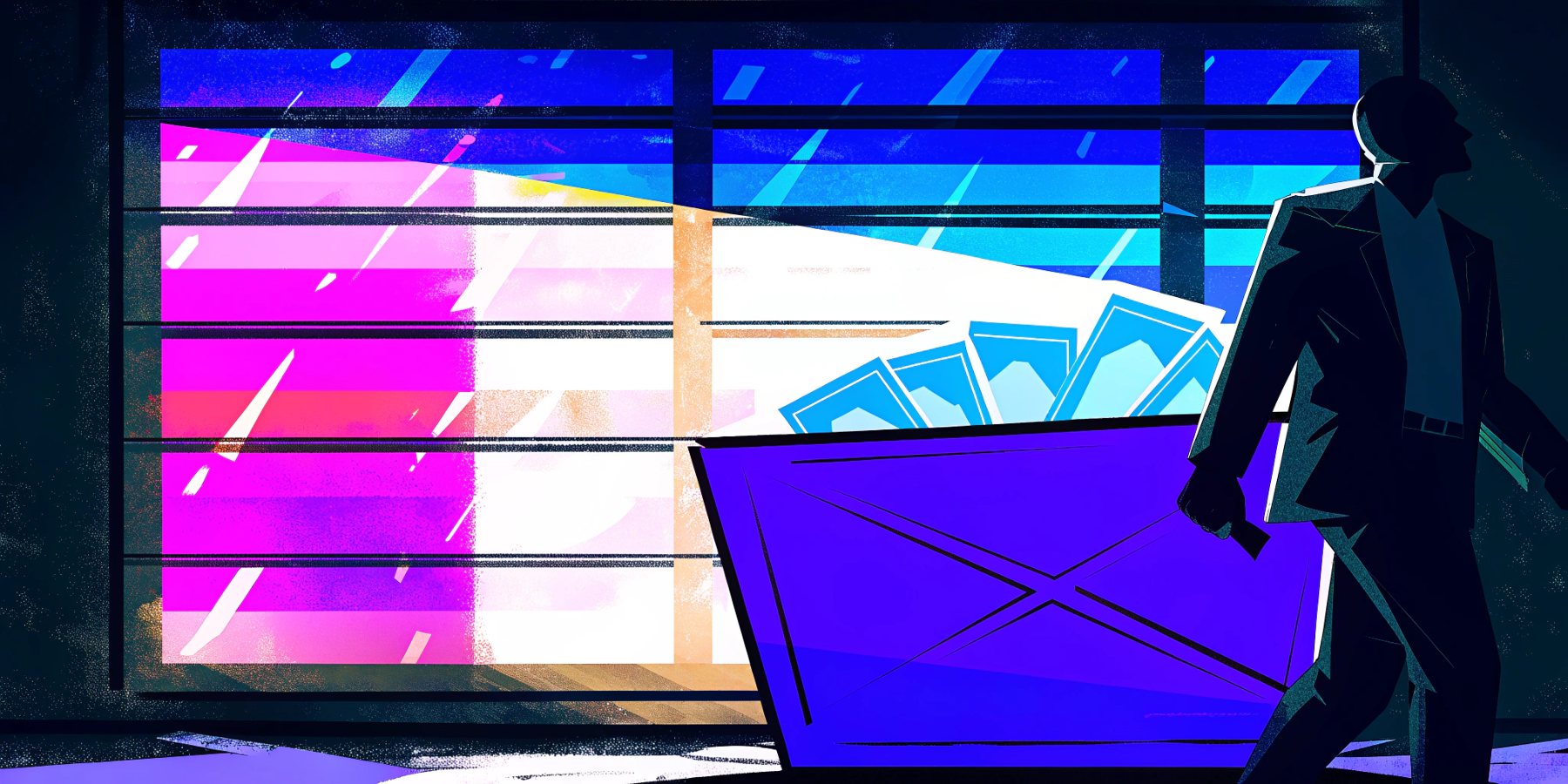For modern web design, flexibility isn’t a luxury—it’s a requirement. Whether you’re creating landing pages, building reusable design systems, or collaborating across teams, you need tools that empower creativity without sacrificing control. That’s exactly why we choose Storyblok as our headless CMS of choice for designers.
As a platform, Storyblok stands apart from traditional CMS platforms like WordPress. While WordPress is widely recognized for powering blogs and a variety of websites, Storyblok websites provide greater flexibility and are better suited for modern, API-driven web development.
This post explains why Storyblok stands out, how it supports component-based design, and why it offers the kind of editorial freedom and design consistency modern websites demand—making it an ideal choice for your next website project.
Introduction to Headless CMS
A headless CMS is a modern approach to content management that separates the backend content management from the frontend presentation layer. This means you can manage your content in one place, while developers have the freedom to use their preferred frontend technologies and frameworks—like React, Vue, or Astro—to build fast, scalable websites. With a powerful headless CMS like Storyblok, you get more than just a place to store content. Storyblok offers a visual editor for real-time editing, a management API for streamlined content operations, and a content delivery API to serve your content wherever you need it.
For developers and designers, this setup means you can create reusable components, organize content efficiently, and build flexible publishing workflows that adapt to any project. Whether you’re launching a new website or enhancing an existing site, Storyblok’s headless CMS empowers you to build fast, scalable web experiences without being limited by traditional CMS constraints. The result? A content management system that keeps up with the pace of modern website development and delivers content seamlessly to any frontend.
Headless CMS Architecture
Headless CMS architecture is all about flexibility and scalability. By decoupling the content management system from the presentation layer, you’re free to choose the best technology for your frontend—whether that’s a static site generator, a JavaScript framework, or something entirely custom. Content is delivered to your website or app via REST API or GraphQL API, making it easy to access and display structured content wherever you need it.
Storyblok’s headless CMS architecture stands out by offering real-time visual editing, robust multilingual content support, and fully customizable content types. This means you can manage content for multiple sites, languages, or platforms from a single CMS, all while ensuring a consistent editing experience. Developers benefit from a future-proof foundation that adapts as technology evolves, while content teams enjoy a flexible, user-friendly interface. With Storyblok, you’re not just building websites—you’re building scalable, flexible digital experiences that grow with your users’ needs.
Why Traditional CMS Platforms Fall Short for Designers
Designers working with monolithic CMS platforms like or Drupal often feel boxed in. The visual interface may seem helpful at first, but these tools:
- Force your layouts into rigid templates
- Make it difficult to manage component libraries
- Create inconsistent editing experiences for content teams
- Require dev workarounds just to preserve layout integrity
When your design system has to conform to the CMS—rather than the CMS supporting your design system—you're already compromising.
Storyblok's Visual Editor: Design-First Thinking

Unlike many headless CMS platforms, Storyblok includes a real-time Visual Editor that allows content teams to compose pages using pre-defined components—and preview the final result instantly.
For designers, this means:
- Layout integrity is preserved
- You define the building blocks users can work with
- Non-designers stay within the design system
The visual editor streamlines content creation and enables teams to build faster by reducing bottlenecks in the editing process. Visual editing doesn’t mean sacrificing structure—it means enabling teams to work faster while still protecting the creative foundation.
Component-Based Content Meets Component-Based Design
Storyblok aligns perfectly with modern frontend frameworks like Astro, Vue, and React. Designers and developers build components once, then expose them as editable, repeatable blocks in Storyblok.
This structure allows:
- Custom layouts built from reusable content blocks
- Drag-and-drop flexibility inside a structured system
- Seamless integration with headless architecture
In short, designers can create more while maintaining visual consistency—and developers love how easily Storyblok connects to the frontend. By using Storyblok, your development team and developers can efficiently manage multiple projects, streamline content management workflows, and deliver scalable digital solutions across platforms.
Setting up a New Project in Storyblok

Getting started with a new project in Storyblok is refreshingly straightforward, even for complex website development needs. Begin by creating a new space in Storyblok, which acts as the foundation for your project. From there, you can define your content model—setting up custom fields and content types that match your design and content requirements. This structured approach makes it easy to organize content and create reusable components that can be used across your site.
Next, configure your API settings, including the content delivery API and management API, to ensure seamless integration with your chosen frontend technology. Storyblok supports a wide range of frameworks and offers plugins and integrations to extend your CMS with additional tools and features. This flexibility allows developers to build fast, scalable websites while focusing on delivering exceptional user experiences. With Storyblok handling content management and delivery, your team can spend more time creating and less time wrestling with technical limitations—making every new project a launchpad for innovation.
Design Systems Come to Life in Storyblok
If you're building a design system in Figma or Sketch, Storyblok gives you a way to bring that system to life—visually, structurally, and collaboratively.
Here's how:
- Match CMS components to your UI kit 1:1
- Control spacing, typography, and responsive behavior at the component level
- Limit editing options where necessary (e.g., max character count, dropdowns, style variants)
Storyblok becomes an extension of your design system, not a barrier to it.
Collaboration Between Designers, Devs, and Marketers
Designers define components. Developers implement them. Marketers use them.
Storyblok bridges these teams by giving each what they need—without overlap or chaos. You design systems, not static pages. Content editors have the freedom to create without breaking layout. Developers don’t get bogged down updating CTAs or formatting text.
Storyblok development fosters collaboration and streamlines workflows between designers, developers, and marketers, making it easier for teams to work together efficiently.
The result? A smarter, more collaborative workflow that produces better, faster results.
Use Cases We've Solved with Storyblok
- Landing page builders for marketing teams that respect design guidelines
- Multi-language websites with content variations built into the structure
- Design system-powered sites where every component maps to a CMS field
- Client-friendly editing experiences that reduce support requests
- Seamless integration with apps and multi-platform digital experiences, enabling content delivery to web and native mobile apps.
- Flexible content organization by managing stories and individual story content units, making it easy to structure, reuse, and edit content across platforms.
Storyblok's APIs, including the Storyblok API, allow developers to handle data requests efficiently, decoupling content from the presentation layer. All API responses, including errors, return JSON, making it easy to work with structured data across different platforms. When new content is created, the API processes and returns data in JSON format, streamlining integration and content management. Storyblok's strong SEO capabilities and recognition in customer reports, such as Gartner's Voice of Customer Report, further validate its effectiveness for modern web projects.
If you’re tired of sacrificing visual precision for CMS usability—or getting stuck rebuilding the same templates over and over—Storyblok solves both problems at once.
Final Thoughts: A Designer's Headless CMS
Storyblok isn't just a CMS—it's a tool that respects the way designers think. It doesn't fight your layout. It doesn't break your visual language. It empowers you to build modular, consistent, scalable design systems that content teams can actually use.
Whether you're designing for a startup, a marketing team, or an enterprise brand, Storyblok gives you the flexibility and control you need—without slowing down the process.
Ready to bring your design system to life with Storyblok? Let's build something flexible together.






